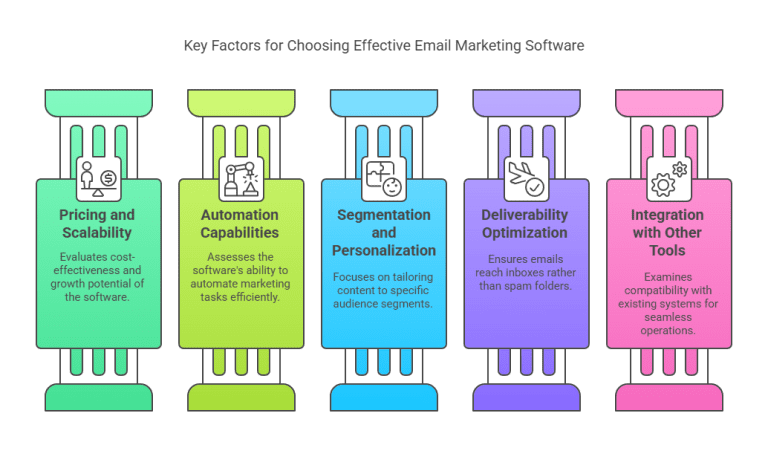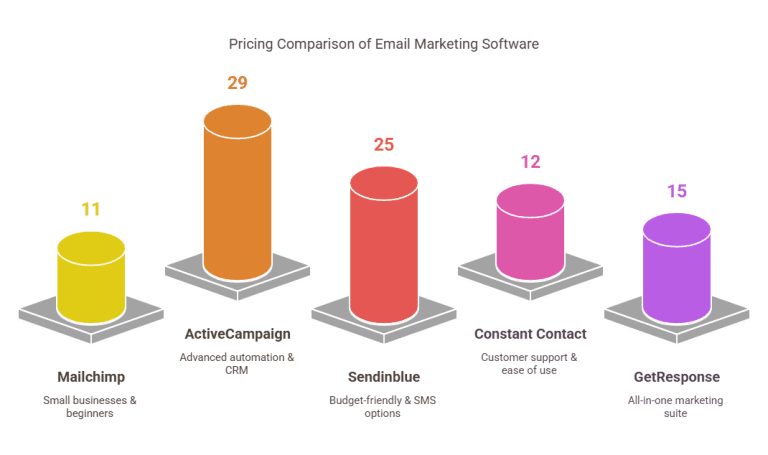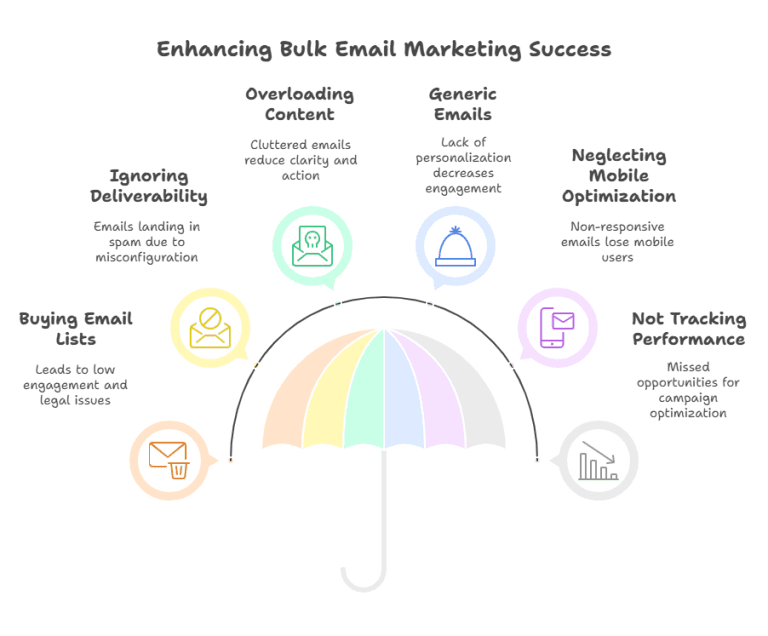Introduction
Most online businesses think bulk email marketing is just a numbers game. Blast a message, hit send, and hope the sales roll in. That myth is why inboxes fill with ignored offers, profits leak out quietly, and would-be empires stall before they ever scale.
But here’s what almost nobody tells you: The software you choose is the difference between printing money and landing in the spam abyss. Choose wrong, and you’ll watch deliverability plummet, engagement flatline, and competitors scoop up your best leads while you wonder what happened. Choose right, and you’ll command attention at scale filling your pipeline, multiplying sales, and building a real business asset instead of chasing viral tricks.
Ask yourself: Are your emails being seen or buried? Are you in control of your list, or just another desperate sender lost in the noise? Most founders, marketers, and creators get this dead wrong… and the cost isn’t just wasted clicks. It’s wasted months.
This is the playbook they wish they’d found sooner. You’ll discover exactly how to pick the right bulk email platform, how to avoid the rookie mistakes that kill campaigns, and how to scale up outreach without getting flagged, throttled, or ignored. No theory. No recycled “tips.” Just battle-tested strategies that separate the inbox winners from the digital ghosts.
Ready to make every email count? Let’s blow up the myths, pick your perfect tool, and put your growth on autopilot starting now.

Key Takeaways: What Most Get Wrong About Bulk Email And How to Win
- Scale or stall: Bulk email software isn’t about sending more, it’s about sending smarter, faster, and to the right people, every single time.
- Personalization is the new profit: Segmentation and dynamic content don’t just increase opens, they multiply sales while others blast and hope.
- Deliverability is your silent killer: One mistake in setup, and you’ll end up in spam hell, invisible and broke. Authentication isn’t optional, it’s survival.
- Rookie mistakes drain your ROI: Bought lists, cluttered templates, and ignoring mobile turn your campaigns into dead weight. Skip these, and you skip the losses.
- Pick your platform for power not price: The right software amplifies everything you do; the wrong one drains time, money, and momentum.
- Data is your unfair advantage: Winners test, track, and pivot while losers blame the “algorithm” and keep repeating failure.
If you get these right, you’re building a list that prints cash and compounds trust. If you miss even one, your competitors will eat your lunch.
How to Choose the Right Bulk Email Marketing Software (Don’t Guess Dominate)
Choosing bulk email software isn’t just about features, it’s about setting up your entire business for speed, control, and growth. Make the wrong call, and you’ll drown in glitches, missed revenue, or deliverability nightmares you can’t fix. Get this right, and everything else gets easier.
Here’s what really matters (and what most buyers overlook):
1. Pricing & Real Scalability
Forget freemium “trials” that lock you in and jack up costs later. Can your platform scale from 500 to 50,000 subscribers without gouging you or throttling your sends? If not, you’ll be stuck paying double or forced to migrate at the worst time.
2. Automation That Actually Saves Time
Drag-and-drop workflows are great but can you build abandoned cart sequences, nurture campaigns, or trigger emails based on user actions? If you can’t automate the grind, you’ll burn out or get buried by competitors who do.
3. Segmentation & Personalization Or Just “Spray and Pray”?
If your emails look identical to every subscriber, your results will flatline. Top platforms let you laser-target by interest, purchase behavior, even location. Want $1,000 campaigns instead of $10 opens? Segment harder.
4. Deliverability Your Hidden Superpower
Features mean nothing if your messages go to spam. Only choose platforms with built-in deliverability tools: domain authentication, blacklist monitoring, and spam tests. If your emails aren’t landing, you’re losing quietly.
5. Integrations That Supercharge Your Workflow
Can you connect your CRM, shopping cart, payment processor, or analytics? If your email platform is a “walled garden,” you’re losing leverage. Pick one that plugs into your whole tech stack so you own your data and your growth.
6. Usability: Easy for You, Not Just the “Tech Guys”
If you need a developer to launch a campaign, you picked the wrong tool. Look for intuitive dashboards, fast editors, and mobile-friendly templates. Your job is marketing, not fighting software.
7. Compliance & Security (Don’t Gamble on This)
A single GDPR slip can wipe you out. The best platforms make privacy, permission, and security default not your problem.
Bottom line: The software you choose today is the leverage (or the leash) you’ll feel for years. Pick like your business depends on it because it does.

Comparison of Popular Bulk Email Marketing Software
Stop getting stuck comparing endless feature lists. Here’s what actually separates the winners from the wannabe’s: real-world strengths, killer features, and who should use which.
| Software | Best For | Key Features | Pricing |
|---|---|---|---|
| Mailchimp | Small businesses & beginners | Drag-and-drop editor, templates, basic automation | Free plan, paid from $11/mo |
| ActiveCampaign | Advanced automation & CRM | Complex workflows, AI-driven optimization | From $29/mo |
| Sendinblue | Budget-friendly & SMS options | Unlimited contacts, pay-per-email pricing | Free plan, paid from $25/mo |
| Constant Contact | Customer support & ease of use | Simple automation, event marketing integration | From $12/mo |
| GetResponse | All-in-one marketing suite | Webinars, landing pages, email automation | Free plan, paid from $15/mo |
| SendShark | Affordable list building at scale | 50,000 subscribers, drag-and-drop builder, integrated hosting | From $25/mo |
Don’t just pick what’s popular pick what fits.
- Need “set it and forget it” simplicity? Go Mailchimp or Constant Contact.
- Ready for serious automation? ActiveCampaign wins.
- Tight budget, scaling fast? Sendinblue covers you.
- Want more than email (webinars, landing pages)? GetResponse is your playground.
Pro move: Always start with a free plan or trial, stress-test the automations, and see if you can actually get support when things break.

Common Mistakes to Avoid in Bulk Email Marketing
Even the best tools can’t save you from rookie mistakes that torpedo your results. Here’s how smart marketers avoid the traps that sink most campaigns:
1. Buying Email Lists: The Fastest Way to Get Blacklisted
Tempted by shortcuts? Don’t do it. Purchased lists kill your sender reputation, attract spam complaints, and could get your domain banned before your first campaign even lands.
Real talk: If you wouldn’t cold-call every name on that list, you shouldn’t be emailing them. Grow your audience the right way with lead magnets, opt-ins, and trust.
2. Ignoring Deliverability: Sending to the Spam Abyss
If you don’t set up SPF, DKIM, and DMARC, most bulk emails vanish into spam.
What separates amateurs from pros? Domain authentication, clean sending lists, and constant deliverability testing. Hit “send” without this, and you’re basically talking to a wall.
3. Overloading with Content: The Scroll of Death
More images, more buttons, more offers… equals less action.
The best bulk emails are simple, focused, and drive a single action. Want results? Cut the fluff, keep it mobile-friendly, and always end with one powerful CTA.
4. Sending Generic, Non-Personalized Emails: Losing the Human Touch
Bulk doesn’t mean bland. Generic blasts feel like spam.
Use names, reference behavior, and segment by interests. Even at scale, personalization is the difference between “ignore” and “click.”
5. Neglecting Mobile Optimization: Losing 50% of Your Audience
Over half your audience is reading emails on their phone.
If your message isn’t responsive, it’s getting deleted before they see your offer. Always test on mobile every single send.
6. Not Tracking and Analyzing Performance: Flying Blind
You can’t improve what you don’t measure. Obsess over your open rates, CTRs, and conversions. Use A/B tests, dig into analytics, and never trust your gut over hard numbers. Winners let the data call the shots.
Common Mistakes vs Pro Moves in Bulk Email Marketing
| Mistake (Don’t Do This) | Pro Move (Do This Instead) | Why It Matters |
|---|---|---|
| Buying email lists – looks like a shortcut, but tanks deliverability and gets you blacklisted fast. | Build organically with lead magnets + opt-ins. Attract people who actually want to hear from you. | A smaller, engaged list outperforms a massive, cold one every time. |
| Skipping authentication (SPF, DKIM, DMARC) – emails go straight to spam or get blocked by providers. | Authenticate your domain before scaling. Treat it like your passport for the inbox. | Deliverability is invisible until it’s gone. Without this, your emails never get seen. |
| Overloaded designs – too many images, buttons, or offers confuse and overwhelm readers. | Keep it clean, mobile-friendly, and laser-focused on one CTA. | Simple, focused layouts drive more clicks because they remove friction. |
| Generic blasts to everyone – feels like spam and kills engagement. | Segment by behavior, interests, or purchase history. Personalize subject lines and content. | Relevance is the new currency. Tailored emails get 2–3x higher conversions. |
| Ignoring mobile optimization – more than 50% of opens happen on phones. | Test every campaign on mobile before sending. Use responsive templates. | If it looks broken on mobile, it is broken. One tap delete, gone forever. |
| Not tracking performance – flying blind with no real feedback loop. | Run A/B tests, track open rates, CTR, and conversions. Pivot based on data, not guesses. | Data turns every campaign into a lesson, helping you improve exponentially. |

Frequently Asked Questions (FAQs) About Bulk Email Marketing
1. What is bulk email marketing software?
Bulk email marketing software is your digital megaphone. It lets you send targeted messages to thousands or even millions of subscribers with just a few clicks. Automation, personalization, and deliverability tools mean you can run powerful campaigns without lifting a finger for every send.
2. Is bulk email marketing legal?
Absolutely but only if you play by the rules. You must have permission (opt-in) from every subscriber and always provide a way to unsubscribe. Ignore GDPR, CAN-SPAM, or other privacy laws and you risk heavy fines, legal headaches, and a ruined reputation. Want your emails to actually reach inboxes? Do it right from day one.
3. How do I stop my emails from ending up in spam?
Simple:
- Authenticate your domain (SPF, DKIM, DMARC non-negotiable)
- Avoid spam trigger words and misleading subject lines
- Clean your list regularly remove dead weight
- Send content people actually want. Spam filters are ruthless. The better your reputation, the higher your deliverability. Always be whitelisted, never blacklisted.
4. What’s the best bulk email software for beginners?
Mailchimp and Sendinblue are the go-to platforms for most beginners. They’re affordable, easy to use, and packed with templates. As you grow, tools like ActiveCampaign or GetResponse offer next-level automation and analytics. The best tool? The one you’ll actually use consistently.
5. Can I use bulk email marketing for any business?
Yes, if you have an audience you want to reach, email works. Local shop? Online store? Coaching, SaaS, digital products? Doesn’t matter. The real question: Are you willing to invest in building your own list instead of “renting” an audience from social platforms?
6. How do I get started if I have zero subscribers?
Start with a lead magnet, something valuable and free. Create a simple opt-in page, promote it everywhere you show up (website, socials, webinars), and collect emails ethically. Every giant list started with the first 10 subscribers.

Turn Your Idea into a Profitable Online Business Without Tech Hassles or Experience!
- Effortless Funnel Building – Drag, drop, and launch in minutes no coding or design skills needed.
- Works for Any Business or Niche – Sell products, services, memberships, or courses with ease.
- Built-in Email Marketing – Automate follow-ups, send broadcasts, and nurture leads all in one place.
- Launch Faster, Sell Sooner – Get your online business up and running quickly, so you can start generating sales ASAP.
- High-Converting Templates – Pre-built pages designed to maximize leads, sales, and profits.
- Step-by-Step Training & Support – Whether you’re a beginner or a pro, you’ll have all the tools you need to succeed.
Final Thoughts
If you’re serious about scaling your business, building real relationships, or simply driving more sales, bulk email marketing software isn’t just another tool, it’s your competitive edge. The entrepreneurs who win in 2025 aren’t those with the flashiest social feeds, they’re the ones who own their audience, automate their outreach, and turn email into a money machine on autopilot.
Choosing the right platform isn’t about finding the fanciest features. It’s about what helps you get started today, what removes friction, makes it easy to create, send, and track, and grows with you as your ambitions explode.
But here’s the brutal truth: Most people will keep chasing hacks, trends, and followers while leaving the only marketing channel they control sitting on the sidelines. Don’t be one of them. Start building your list, launch your first campaign, and keep refining. Your audience, your brand, your revenue, they’re only one click away.
Ready to get out of the noise and own your future? Bulk email marketing is where you start. Your competitors are hoping you’ll stay stuck. Prove them wrong.

0 Comments